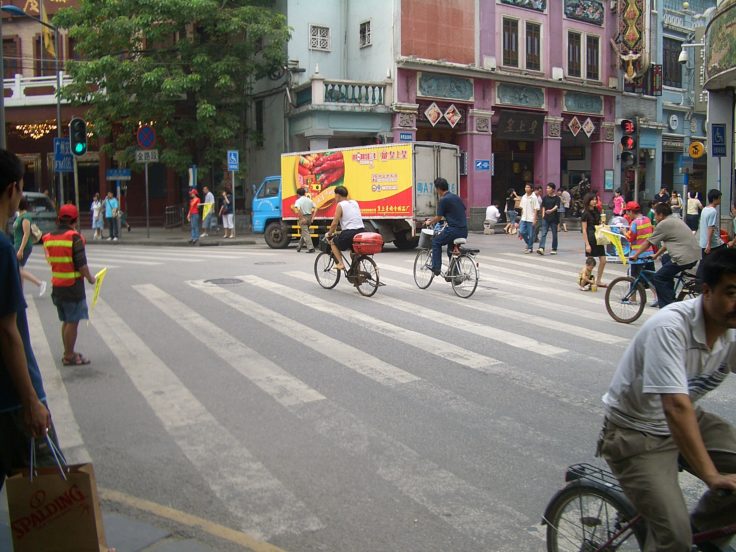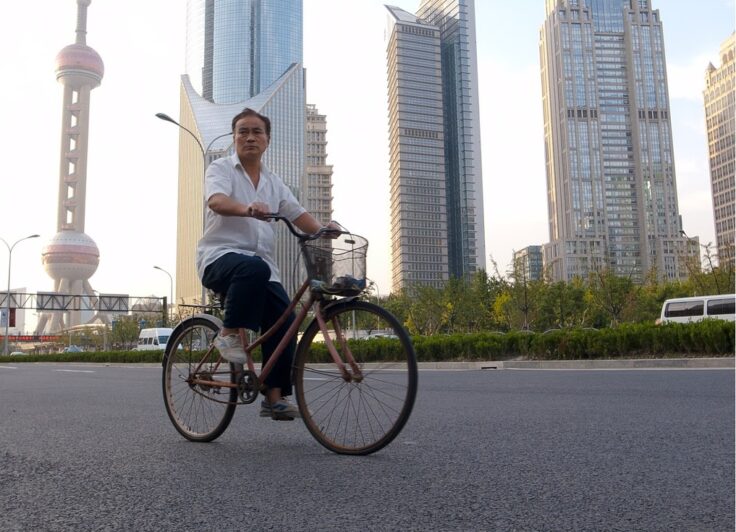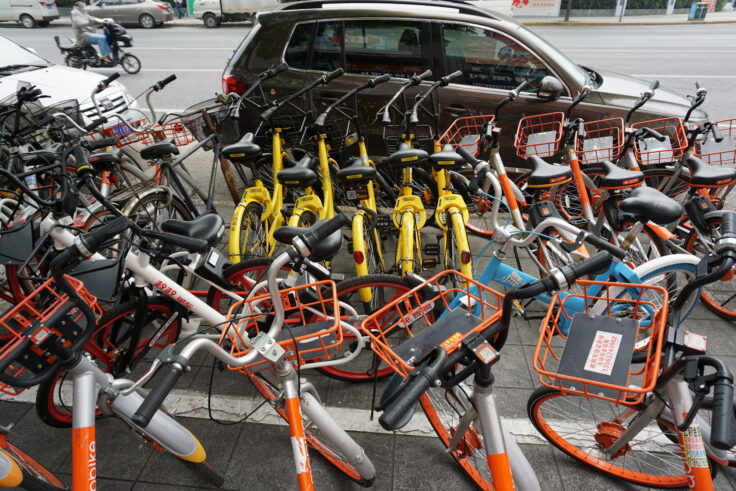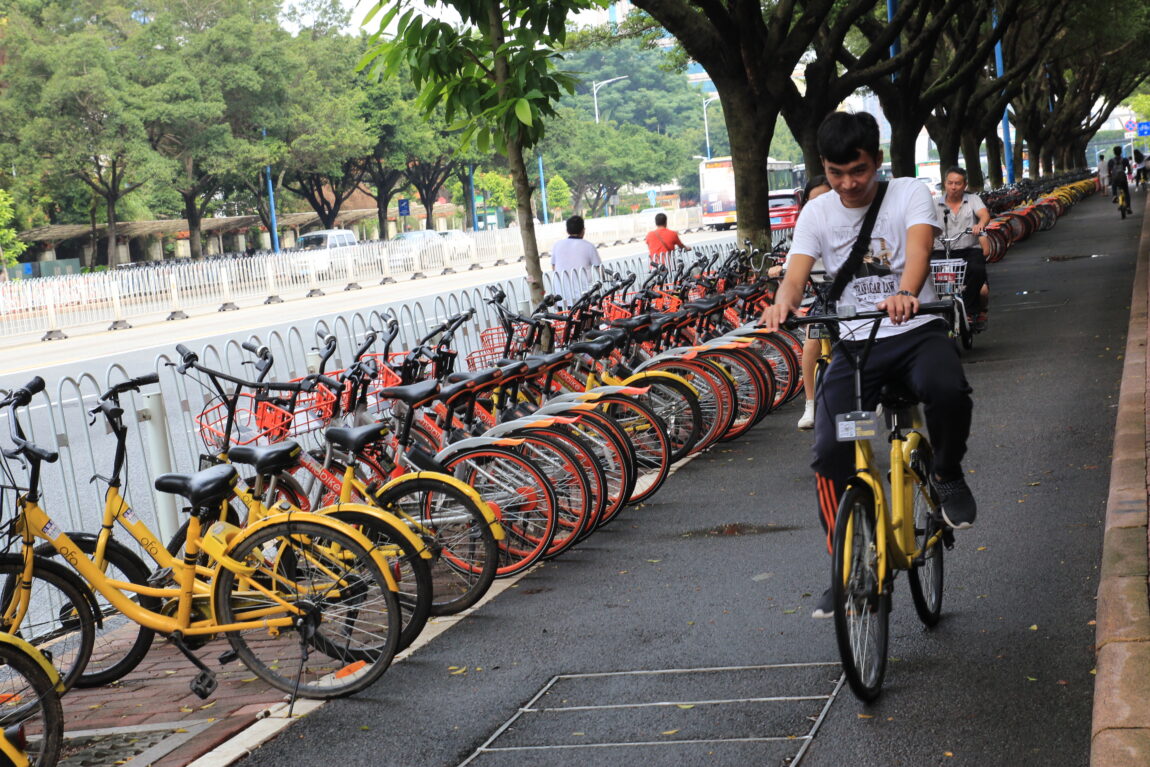September 06, 2023
The Lane Ahead: Challenges and Considerations for China’s Cycling Sector
What does the future of ‘cycling cities’ look like for China, what unique challenges do they face, and how are some cities already taking action?
This article, developed with ITDP China, is the second in a three-part series highlighting the past, present, and future of urban cycling as a means for promoting sustainable and active mobility across China.
This article was authored in collaboration with ITDP team members He Kanghao and Hu Qianqian.
As discussed in the first article of this series, China has had a complex relationship with urban cycling throughout the past few decades. Now, a renewed demand for and interest in urban cycling is growing, establishing its potential as a reliable, affordable mode of transport in cities and a means for improving air quality and the environment. Nevertheless, a large-scale shift towards cycling in many Chinese cities — along with a necessary reclamation of streets from cars, parking lots, and highways — will certainly be a monumental undertaking. To move forward, it is important that decision-makers, funders, and stakeholders recognize the unique regional challenges and opportunities that exist on the road toward making all cities in China truly ‘cycling cities’.
A Geographic Divide
Due to differences in social and economic backgrounds, there is a significant disparity in the levels of bicycle ridership and development between cities in southern and northern China. This has led to a considerable geographic gap in non-motorized transport (NMT) infrastructure and street conditions in different regions. Northern Chinese cities, like Beijing for example, have been at the forefront of efforts to create more cycling-friendly streets and supportive policies. From 1981 to 1995, the city was well-known for its bike-friendly environment, with cyclists occupying 76% of street space in 1988, including busy intersections where bike traffic could reach nearly 20,000 bicycles per hour.
With the rise in car ownership in the 1990s, bikes were gradually pushed aside and separated from drivers by traffic islands and car-centered highway developments. Dedicated bike lanes became increasingly occupied by cars, leading to a sharp decline in bicycle use, from 62% of road transport in 1986 to just 15% in 2014. Even after experiencing a sharp decline in bicycle travel, Beijing still retained a relatively well-developed bicycle infrastructure and culture, remnants from previous eras that are now helping to support a post-pandemic rebound.


In contrast to Beijing, however, the southeastern city of Shenzhen did not incorporate many NMT lanes into its historic city road planning strategies and traffic systems. Today, most roads in Shenzhen, especially major roads with high traffic flow, still lack space for more sustainable forms of mobility. Shenzhen chose to establish bike lanes on sidewalks rather than on vehicle roads, which worsened both the environment for cyclists and pedestrians. Similar to Shenzhen, the central urban area of the southern city of Guangzhou often does not account for cyclists in its modern development plans. In the context of China’s past few decades of car-focused planning, the lack of urban space available to accommodate public transit and modes like cycling presents a key challenge for national transport reform.
In many neighborhoods, bike networks and street connections also remain incomplete, particularly in older areas of cities. Many historic cities in both the north and south of the country lack public and street space in dense neighborhoods, making it particularly challenging to accommodate wide vehicle lanes, bike lanes, and sidewalks altogether. Customized regional and city-level policies are needed to help diverse Chinese cities promote cycling and pedestrian infrastructure that does not overlap dangerously with vehicle traffic, but can also harness the unique geographies available in the vast country. For a successful revitalization of cycling across China, it is important to recognize the dynamic histories and contexts of each city in order to develop actionable and practical planning solutions on national and local levels.

Electric Bikes See A Surge, But Require Regulation
Since 2020, the pandemic has fueled cycling all around the world, with China being no exception — in fact, the number of bike trips exceeding three kilometers reportedly doubled between February and March of 2022 globally, compared to the same period in 2021. The rise of electric bikes (e-bikes) is particularly notable, with the popularity of the bikesharing and ride-hailing sectors leading to the rapid expansion of e-bikes nationally — China’s total number of e-bike units in operation exceeded 10 million in 2020. However, the parallel growth in demand for goods delivery services, in which e-bikes are widely used in cities, has compounded challenges related to traffic, congestion, and road safety on many streets not designed to adequately accommodate both cars and micromobility.
Although pandemic control measures have mostly ended in China as of 2023, the shift in transport modes brought about by the past few years continues to influence people’s mobility choices. Fortunately, many indicators still point to a continued interest in cycling, especially with the sales and usage of e-bikes increasing with a particularly greater impact on southern Chinese cities where traditional cycling infrastructure is lacking. For instance, in Guangzhou in 2022, the daily travel volume of e-bikes was an estimated 6 million trips, which is comparable to the daily volume of subway metro travel.
Despite China’s emphasis on promoting cycling, the unique attributes of e-bikes have compelled both national and local governments to approach them with caution and discretion. E-bikes offer an economical, swift, and adaptable transport solution, bridging the gaps in public transit services, supplanting transport needs traditionally met by cars, and also forming the basis for new employment opportunities in adjacent sectors. However, their rapid proliferation also presents significant challenges for urban congestion and city regulators. The current bicycle lane networks in many cities suffer from poor and inadequate facilities, leading to doubts about the safety of cyclists who may end up riding in vehicle lanes, creating hazards for all commuters.
Cyclists have also expressed concerns about the threat posed by other cyclists riding different types of bikes. The significant speed difference between pedal bikes, shared bikes, and e-bikes exacerbates this issue, with the number of e-bike and shared-bike users dominating most bike lanes. Additionally, issues related to bike parking, intersections, and storage present challenges for many cities. To mitigate the issues posed by e-bikes, agencies in places like Guangzhou, Shenzhen, and Zhuhai have begun introducing restrictions on the use of e-bikes in many core urban districts. However, these restrictions do not fully reflect the national Government’s volatile attitude towards e-bikes.
As the number of e-bike users and delivery services increases, city governments are transitioning from a “one-size-fits-all” policy to one that aims to combine the unique interests of e-bike users with those of the broader cycling community. For instance, Guangzhou’s initial plan to restrict e-bikes throughout much of the city center has evolved into a time and place-oriented restriction. China’s e-bike boom certainly brings with it encouraging opportunities for cycling as a whole, but will also require cities to be strategic and collaborative in their approach.

Bikesharing is Growing, Despite a Rocky Start
Since 2010, many Chinese have taken advantage of bikeshare systems, with municipal programs launching in first and second-tier cities to address issues of last-mile connectivity for millions of individuals who work or live more than a few minutes from subway and metro stations. Bikes have re-emerged on city streets as a feeder service from subway stations to people’s homes and other destinations. Throughout the pandemic, shared bicycles have showcased remarkable adaptability for China.
However, promoting their usage has also presented notable administrative challenges, such as the disorderly placement of dockless bikes, user safety, and concerns over the security of user information and funds. In 2017, the Ministry of Transport and other 10 ministries and commissions jointly issued the “Guidance on Encouraging and Regulating the Development of Internet Leased Bicycles”, which clearly put forth a policy of “discouraging the development of Internet leased electric bicycles”. Cities such as Beijing, Shanghai, Guangzhou, and Shenzhen subsequently tightened up policies on bikeshare operators to better manage the chaotic environments the oversupply and unregulated share bikes have created.
The guidance also required urban officials and enterprises to better manage bike parking, standardize services, and guarantee the safety of users’ deposits. The bike-rental industry thus underwent a sudden contraction as a result of this enforcement, with tens of millions of shared bikes removed from city streets. The country’s largest bikeshare companies went through an upheaval in the following years, but their rapid collapses did eventually allow room for more innovative operators to enter the space that are now better equipped to adapt to user experience, demand, and technology needs.

In more mid-sized and third-tier Chinese cities and other downstream markets, the policies for shared e-bike systems are now relatively relaxed. Therefore, the main launch markets for shared e-bikes are in smaller cities and districts where they are developing rapidly and have begun to be highly sought after. According to statistics, 36% of China’s e-bike sharing users are distributed in third-tier cities, and 34% are distributed in fourth-tier cities and other downstream markets. In time, how these smaller cities handle the bikeshare boom has the potential to influence strategies in larger urban areas and regions.
In a post-pandemic context, the Chinese bikeshare systems that exist today are still adapting to a rapidly changing market, but offer immense potential to lay the foundation for cycling access to help reduce car trips across China’s cities. The challenges that Chinese cities are facing — from complex physical infrastructure to volatile public opinion — are certainly not insurmountable. In fact, how these challenges are addressed may be critical to helping China become a model for other nations seeking to deal with similar issues.
From the unique contexts between cities to the emerging landscapes of e-bikes and bikeshare, it will certainly take time for China’s cities to adapt to a renewed interest in cycling and to ensure safety, sustainability, and equity on its streets.
What is clear, however, is that more strategic investments and commitments to sustainable mobility are necessary if these cities are to improve quality of life, grow economies, and pave a greener path for China’s future.
